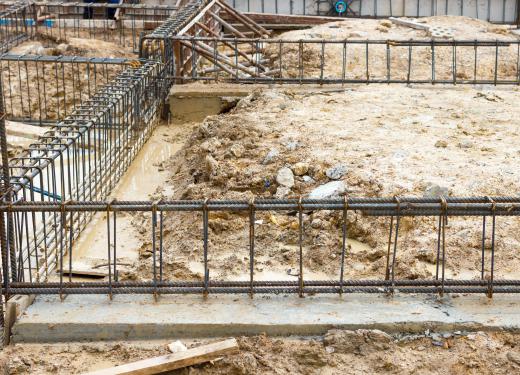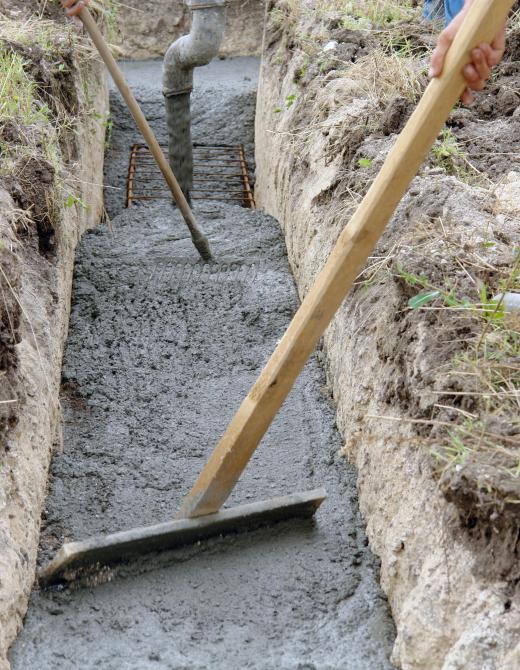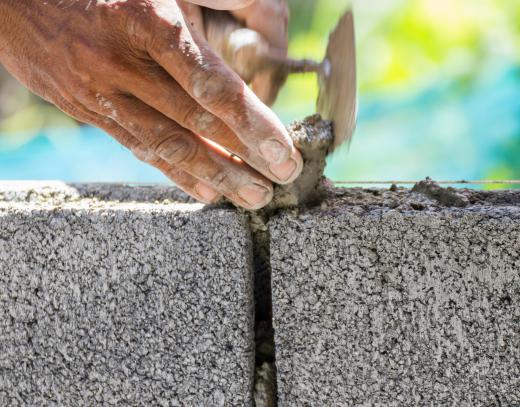Pouring footings can be a stressful job, since the forms need to be poured quickly and in the right conditions. It is best to plan out the process ahead of time and keep a close eye on the weather to spot the most optimal conditions. Pouring footings in weather that is too cold can cause the water to freeze within the structure; when thawing occurs, the concrete can crack, leading to a weak structure. Pour during the summer months when possible, and choose a day that is not too hot; the longer the concrete takes to set, the stronger it will end up being.
Gather all the proper materials for pouring footings ahead of time, and choose the proper concrete for the job. Concrete is measured in PSI, or pounds per square inch, and the higher the PSI, the stronger the concrete is likely to be. Choose a stronger concrete, even if it means paying more money, as this will prevent premature cracking that will necessitate repairs down the road. It is important to read the instructions for combining the concrete with water, and avoid adding too much water that can end up pooling or making the mixture too thin.

All sides of the concrete must be supported when pouring footings to prevent bulging, sagging, or other manipulations of the mixture. The poured mixture can be extremely heavy, so solid tubing or pieces of wood should be used to support it both during the pouring process and after, when the concrete is setting. Leaving the braces or molds in place for a day or more while the mixture sets is advisable.

Just as important as preparing the mixture is preparing the surface on which the mixture will be poured. Make sure the ground beneath the footing locations will be able to support the weight of the concrete as well as the structures the footings will support. It may be necessary to put stones or cinders in the holes before pouring footings to ensure the mixture will be adequately supported.

Larger footings may require additional structural support. If this is the case, steel rebar should be used. These steel rods can be placed in such a way that they will be in the center of the concrete structure after the mixture sets; this enhances the tensile strength of the footings and will help prevent cracking or shifting when weight is placed upon the finished structures.
